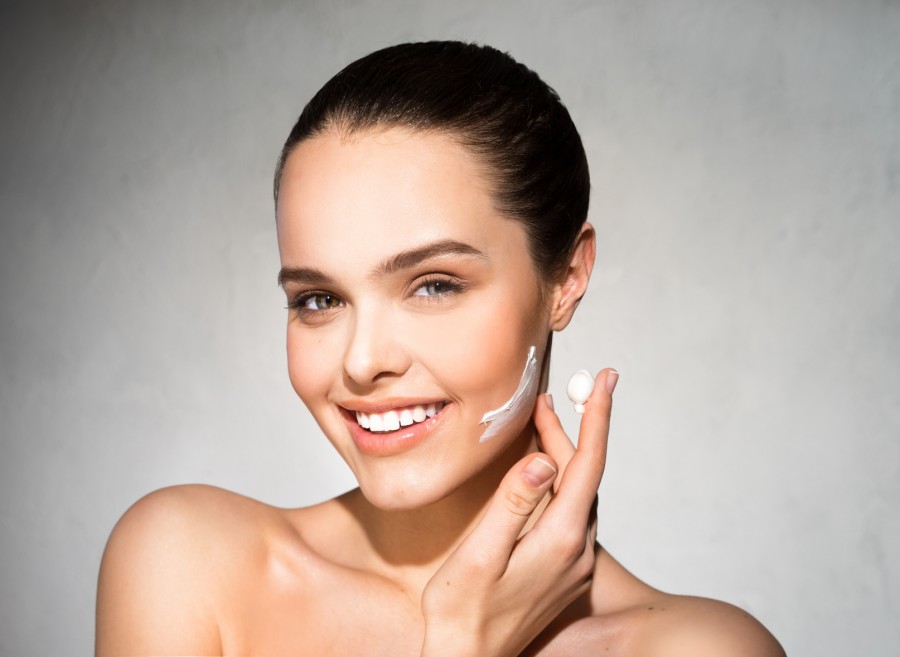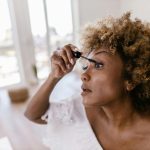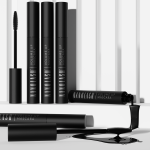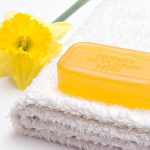A good face cream must consist of the right composition of ingredients. Oftentimes, we don’t even think what components are responsible for moisturizing effects and we are only guided by the labels. It’s time to change it! We take the most popular moisturizing ingredients of creams under the microscope.
The basic cosmetic that we use every day is a face cream. They come in different types for various purposes (anti-wrinkle, brightening, for capillary skin, anti-acne, etc.). Nevertheless, in each one, we will find moisturizing ingredients. Why? Because moisturizing the complexion is the fundamental step that we must take – regardless if the skin is dry or oily. The skin needs water, so it is worth paying attention to what our favorite cream contains and whether there is at least one ingredient regulating the level of hydration.
Humectants – moisturizing ingredients
All moisturizing ingredients are called humectants. They must be present in a good moisturizing cream because they have the power to bind water and retain it in the skin. Moreover, there are natural and synthetic humectants. Their task is always the same: store and transport water to the inner parts of the skin.
Emollients – ingredients retaining water in the skin
They are partially responsible for moisturizing, for instance, oils or vaseline. They strengthen the natural hydro-lipid layer and thus, prevent water from evaporating from the skin. Emollients work as a shield for our skin thanks to which we are able to maintain the right level of hydration for a longer period of time. It is also worth looking for such ingredients in the face creams you intend to purchase.
Is water a moisturizing ingredient?
No, water is not able to hydrate the skin itself. Of course, it must be supplied to the body to feel and look good. However, it is worth remembering that water escapes from the skin cells as quickly as it is delivered. Hence you need humectants and emollients – they make the water stay in the skin. The correct level of hydration does not depend on the water itself.
What specific ingredients of moisturizing creams should we look for?
MOISTURIZING INGREDIENTS IN CREAMS
Get to know the best moisturizing ingredients in creams that will give each cosmetic the desired properties. Some of them are popular, some may be a surprise to you. However, it is worth remembering that it does not matter how many moisturizing ingredients are contained in the cream, but in what amounts. The higher place in the composition, the better, because the content of a given component is greater.
- Hyaluronic acid – it naturally occurs in our skin (fills intercellular spaces, moisturizes). It provides the skin with smoothness, elasticity, and proper hydration because it attracts water like a sponge. Hyaluronic acid is willingly used in anti-wrinkle treatments. It can also gently protect against UV radiation.
- Urea – is a moisturizing ingredient that also occurs naturally in our skin. A typical humectant that maintains moisture in the skin. It is a product of protein metabolism and it is worth remembering that its concentration in the body decreases with age. Therefore, it is worth using urea creams because they have not only very strong moisturizing, but also anti-inflammatory and antibacterial properties.
- Lactic acid – a lot less popular ingredient in moisturizing creams. It hydrates indirectly because it stimulates the production of ceramides. These, on the other hand, create a natural armor on the skin that prevents water evaporation. An additional feature of lactic acid is the fact that it not only moisturizes but also exfoliates dead skin cells.
- Glycolic acid – is another ingredient that can be seen in moisturizing creams. Like the aforementioned acid, it also moisturizes the skin but binds water in its deepest layers. It is a humectant, but it also works as an exfoliating acid and accelerates the removal of dead skin cells that are completely devoid of water.
- Lanolin – an emollient worth mentioning when discussing creams. This ingredient should be present in rich creams used in the winter. The component protects the skin against water loss and adds softness. Lanolin prevents the evaporation of water, so it can be considered as an indirectly moisturizing ingredient.
- Vegetable oils – a similar task is fulfilled by plant oils, which are the most popular and most frequently found in creams. They strengthen the natural hydro-lipid barrier, thanks to which the moisturizing cream cannot only supply water to the inside of the cells but also prevent its loss. Thus, oils help to solve many other skin problems.
- Coenzyme Q10 – most often found in anti-wrinkle creams, because it has been considered one of the best rejuvenating ingredients. Not many people realize that, in addition to making the skin more elastic and smooth, it also works as a perfect substance to support skin hydration. In other words, it’s always beneficial when found in a cream.
- Panthenol / pro-vitamin B5 – this is also an element of our skin, which we may start missing at a certain age. Supplying provitamin B5 in cream is a great way to nourish, strengthen and moisturize the skin, but also the hair and nails. In the body, it turns into vitamin B5 or pantothenic acid.
- Squalane – a substance belonging to the hydrocarbon group, which is a component of human sebum. This one is responsible for hydration, which means that it is definitely worth looking for squalane in moisturizing creams. It has a bactericidal effect, but above all, it protects the skin against water loss. We find it in olive oil and some oils, but also as an independent ingredient.









Leave a Reply